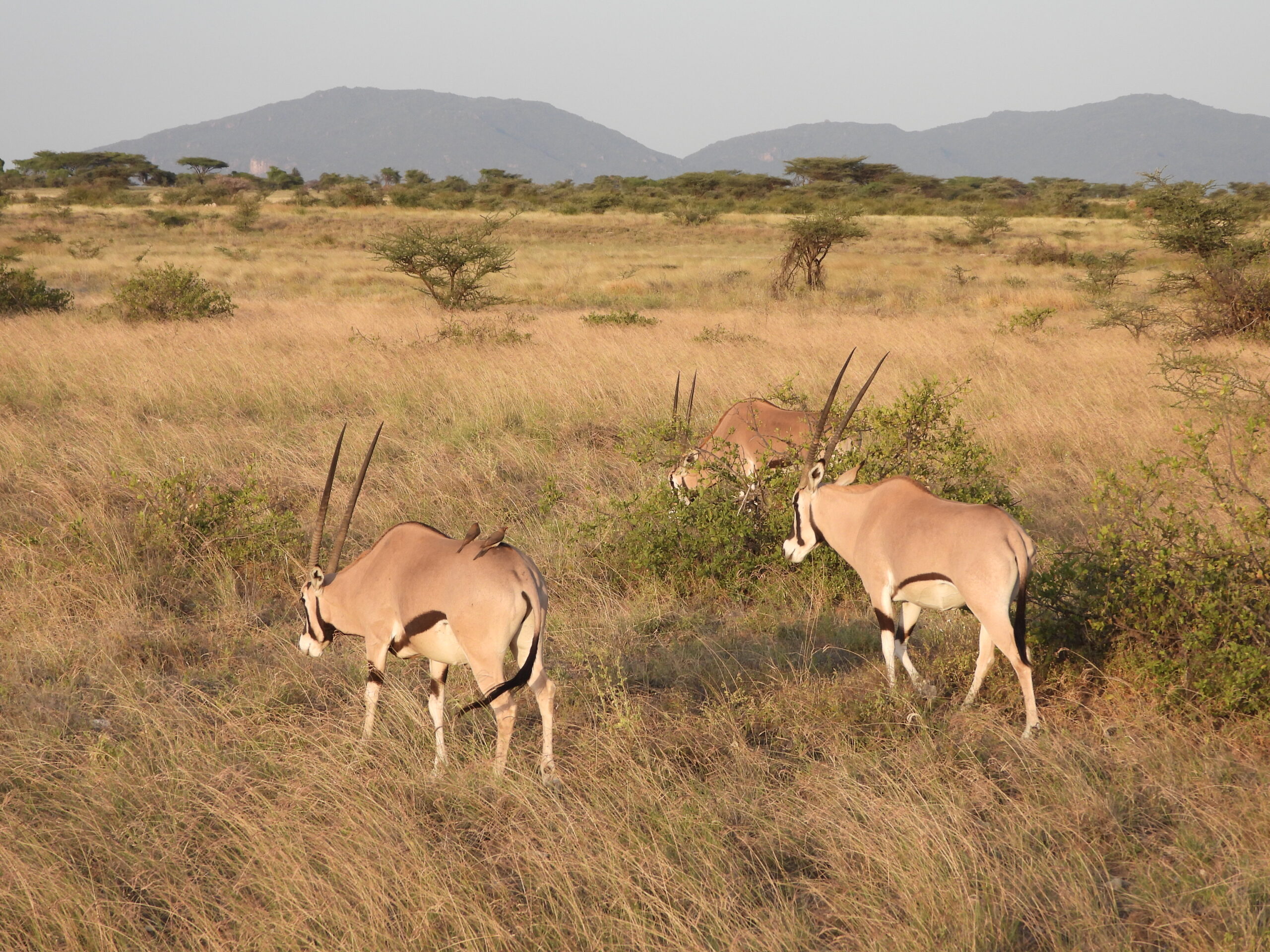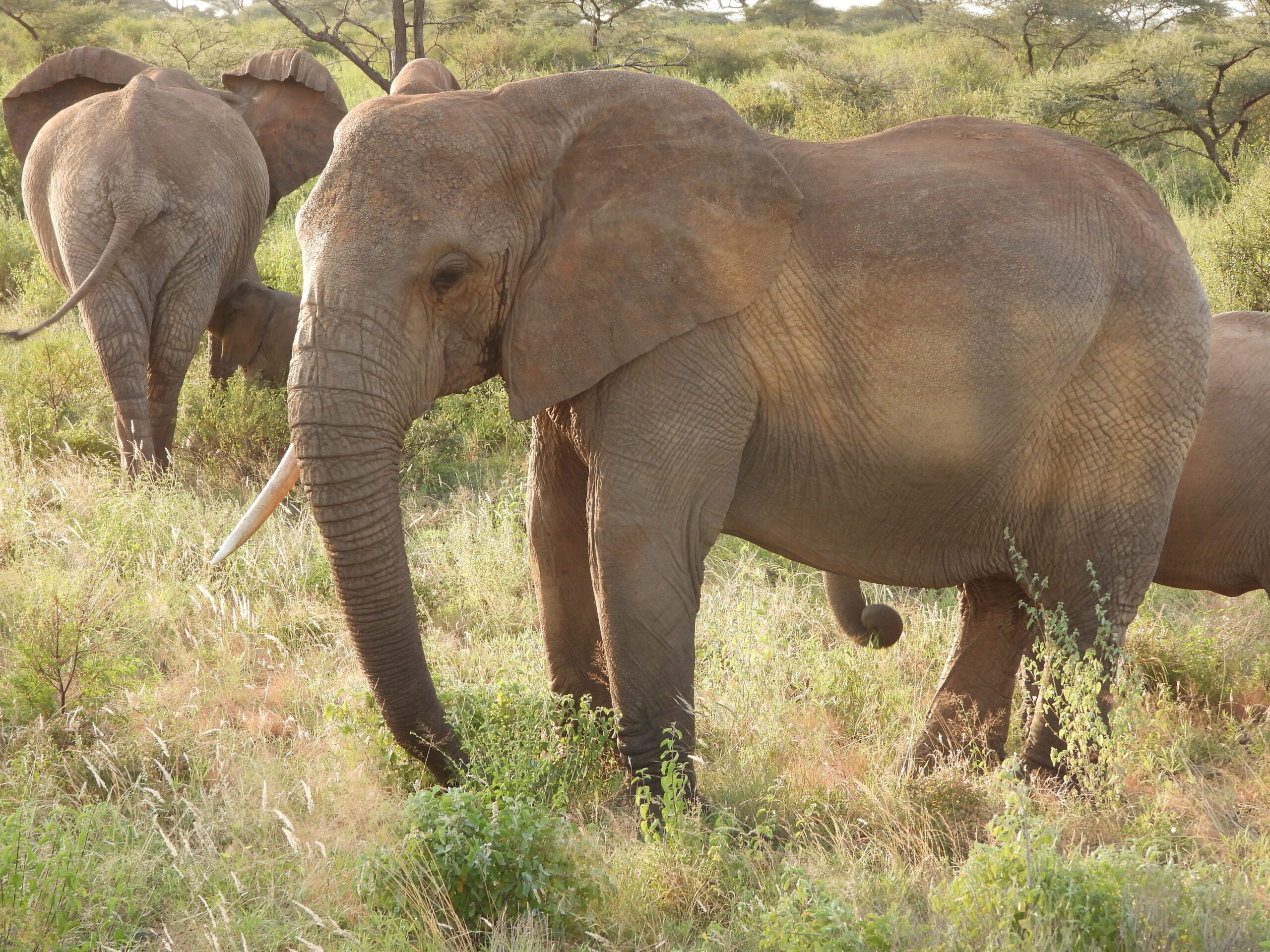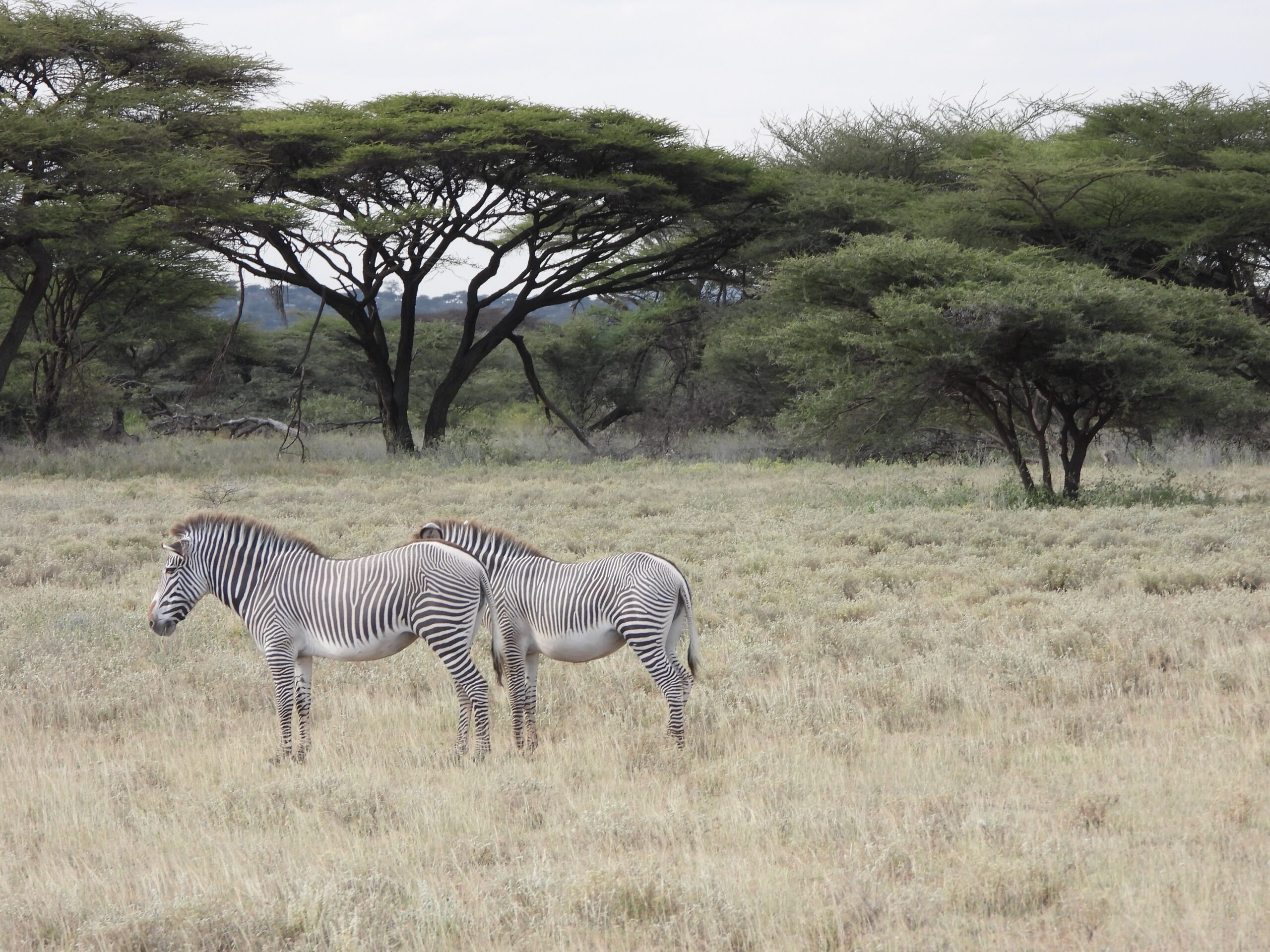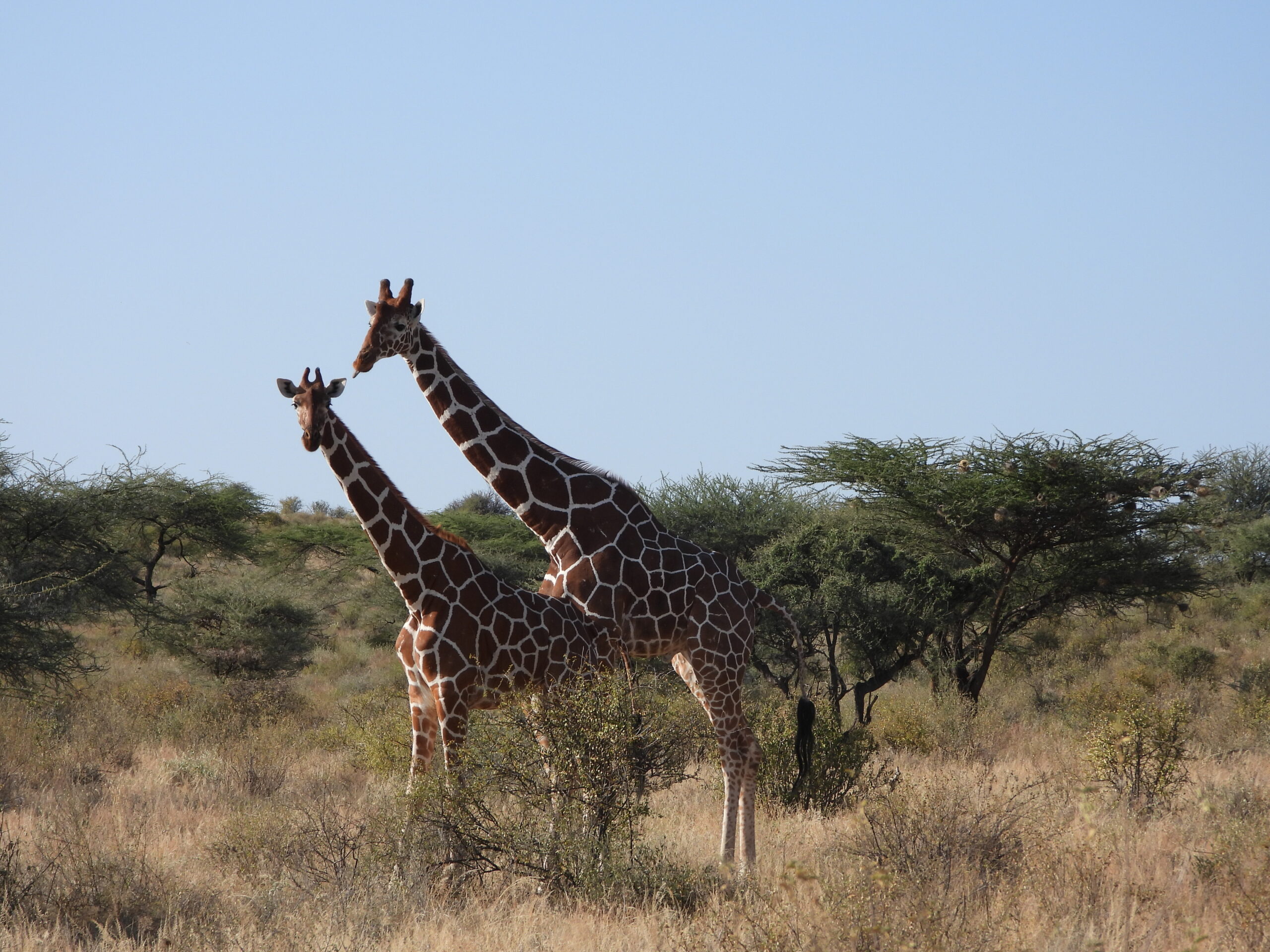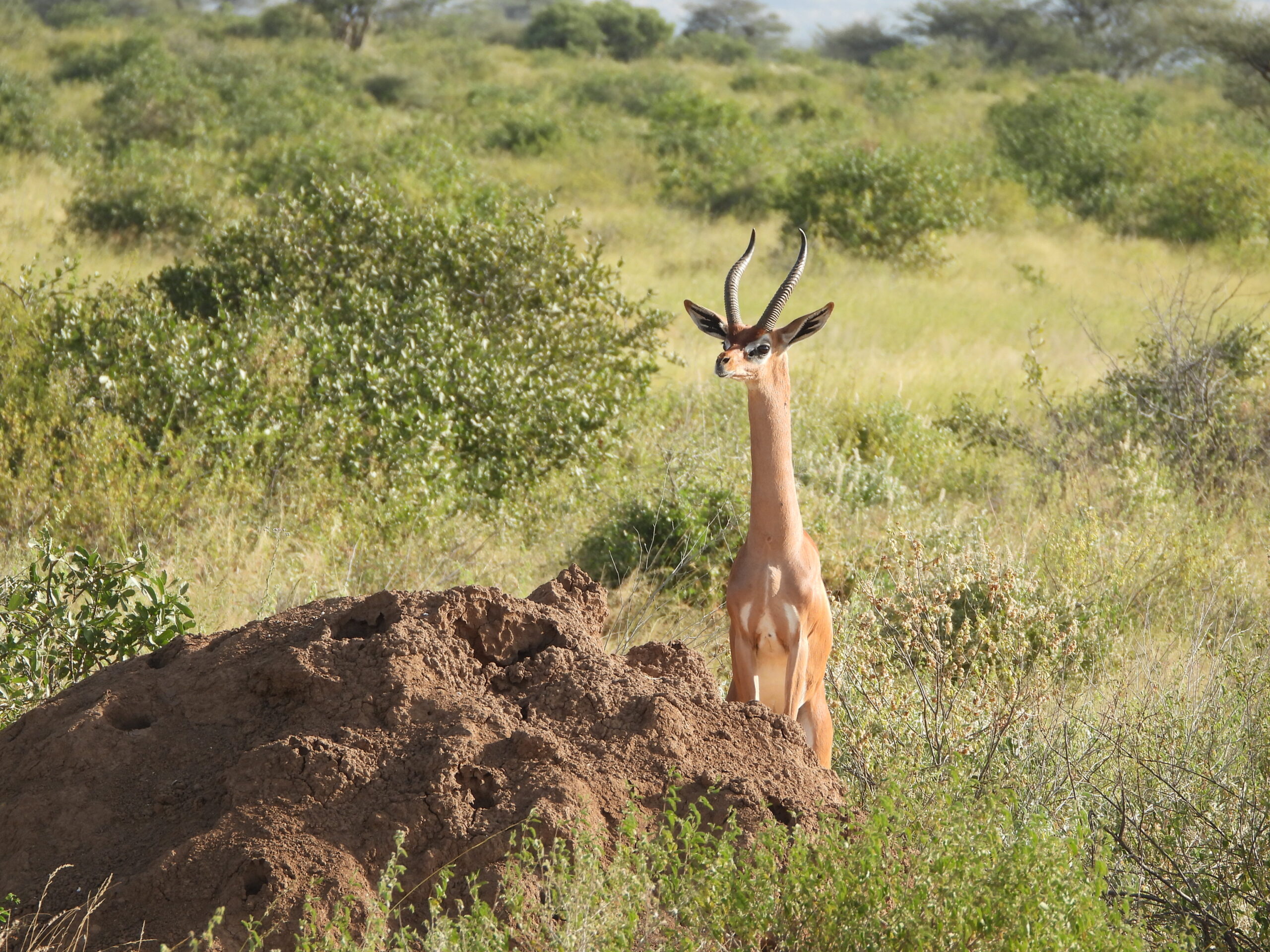Samburu National Reserve is a wild, remote safari destination in northern Kenya, famous for its semi-arid landscapes, elephants, predators, and the Samburu Special Five. Nestled along the Ewaso Nyiro River, Samburu offers a raw and authentic safari experience with fewer crowds than southern Kenya’s popular parks like Maasai Mara and Amboseli.
For travelers seeking rare wildlife, dramatic scenery, and cultural encounters with the Samburu people, this reserve is a must-visit.
At a Glance – Samburu National Reserve
- Location: Northern Kenya, 350 km (217 miles) from Nairobi
- Access: By road (5–6 hrs) or daily flights (1.5 hrs) from Wilson Airport
- Size: 165 km² of semi-arid savanna, woodland, and riverine forest
- Signature Wildlife: Samburu Special Five – Grevy’s zebra, reticulated giraffe, Somali ostrich, gerenuk, beisa oryx
- Other Wildlife: Elephants, lions, leopards, cheetahs, wild dogs, buffalo, 450+ bird species
- Best Known For: Rugged beauty, cultural experiences, elephants in the Ewaso Nyiro River
- Safari Style: Exclusive, less-crowded, ideal for repeat visitors and photographers
Why Visit Samburu National Reserve?
- Samburu Special Five – Rare species found only north of the Equator.
- Big Cats & Predators – Lions, leopards, cheetahs, hyenas, wild dogs.
- Elephants of the River – Herds bathing and playing in the Ewaso Nyiro.
- Authentic Culture – Visit Samburu villages, meet people known for their colorful attire and traditions.
- Birding Paradise – 450+ species, including kingfishers, hornbills, and secretary birds.
- Exclusivity – Fewer tourists compared to Maasai Mara, making it peaceful and intimate.
The Samburu Special Five
Samburu is world-famous for the Samburu Special Five, rare species not commonly seen in other parts of Kenya.
- Grevy’s Zebra – The largest zebra, with narrow stripes and a white belly. Endangered, but Samburu is one of the best places to see them.
- Reticulated Giraffe – Known for its striking net-like pattern on a rich chestnut coat. Photogenic and unique to northern Kenya.
- Somali Ostrich – With blue legs and neck, it is distinct from the Maasai ostrich. Males turn brighter blue during breeding season.
- Gerenuk (Giraffe Gazelle) – A gazelle with a long neck that stands on hind legs to feed on tall bushes. Rarely seen outside northern Kenya.
- Beisa Oryx – A desert antelope with long, straight horns and bold facial markings. Perfectly adapted to Samburu’s arid climate.
Spotting all five is a highlight of any Samburu safari.
Wildlife in Samburu
Beyond the Special Five, Samburu is home to:
- Big Game: Elephants, buffalo, hippos, crocodiles.
- Predators: Lions, leopards, cheetahs, hyenas, wild dogs.
- Birdlife: Over 450 species, including ostriches, vultures, kingfishers, hornbills, and eagles.
Best Time to Visit Samburu
- June – October (Dry Season) → Best wildlife viewing; animals gather at the river.
- January – March (Hot & Dry) → Excellent for predator sightings and photography.
- November & April–May (Green Season) → Lush scenery, migratory birds, fewer tourists.
Wildlife, including the Special Five, is visible year-round.
Samburu Safari Packages & Costs
Safari prices vary depending on lodges, transport, group size, and season.
Costs Depend On
- Accommodation class – budget to luxury
- Transport – road or flights
- Season – Jan–June is cheaper than July–Oct or December
- Extras – cultural visits, nature walks
Top Activities in Samburu
- Game Drives – Morning and afternoon safaris to see the Special Five and predators.
- Cultural Visits – Meet Samburu people, enjoy traditional dance and storytelling.
- Birdwatching – Excellent during the rainy season.
- Photography Safaris – Capture golden sunsets, elephants at the river, and unique wildlife.
- Nature Walks – Available in community conservancies around Samburu.
Conservation in Samburu
Samburu thrives thanks to strong conservation and community partnerships:
- Save the Elephants research center is based here.
- Community conservancies expand protected land beyond the reserve.
- Tourism revenue supports schools, clinics, and anti-poaching programs.
- Partnerships with Samburu people balance wildlife conservation with traditional pastoral life.
Samburu vs Other Parks in Kenya
| Park | Highlights | Best For | How It Compares |
| Samburu | Special Five, culture, elephants in river | Adventurers, photographers | More exclusive and rugged than southern parks |
| Maasai Mara | Great Migration, Big Five, predators | First-time visitors, migration safaris | More famous and crowded; Samburu offers unique wildlife |
| Amboseli | Elephants, Kilimanjaro views | Photographers, elephant lovers | Amboseli = elephants + scenery; Samburu = rare wildlife + culture |
| Ol Pejeta | Rhinos, chimps, Big Five | Conservation travelers, families | Samburu adds Special Five; Ol Pejeta focuses on rhino & chimp protection |
| Lake Nakuru | Flamingos, rhinos, birding | Birdwatchers, short trips | Compact; Samburu is larger, wilder, with unique species |
Suggested Safari Combinations
- 5 Days Samburu & Ol Pejeta – Special Five + rhino and chimpanzee conservation
- 10 Days Samburu, Aberdare & Maasai Mara – Culture + forests + Great Migration
- 13 Days Samburu, Ol Pejeta, Lake Nakuru & Maasai Mara – Complete wildlife circuit
FAQs about Samburu National Reserve
Q: Where is Samburu National Reserve located?
Samburu is in northern Kenya, about 350 km (217 miles) from Nairobi, near Isiolo and the Ewaso Nyiro River.
Q: How do you get to Samburu?
You can drive from Nairobi in 5–6 hours via Nanyuki and Isiolo, or fly in 1.5 hours from Wilson Airport to airstrips inside the reserve.
Q: What is the Samburu Special Five?
They are rare species only found north of the Equator: Grevy’s zebra, reticulated giraffe, Somali ostrich, gerenuk, and beisa oryx.
Q: Is Samburu part of the Big Five circuit?
Yes – Samburu has elephants, lions, leopards, and buffalo. Rhinos are not common here, but they can be seen in nearby Ol Pejeta Conservancy.
Q: What makes Samburu different from Maasai Mara or Amboseli?
Unlike Mara or Amboseli, Samburu is known for the Special Five, arid landscapes, and Samburu culture, with fewer crowds and a more rugged feel.
Q: What is the best time to visit Samburu?
The dry season (June–October, Jan–March) offers the best game viewing. The green season (Nov, Apr–May) brings lush scenery, migratory birds, and fewer visitors.
Q: How hot is Samburu? What is the climate like?
Samburu is semi-arid, with daytime temperatures reaching 30–35°C (86–95°F). Early mornings and evenings are cooler.
Q: Is Samburu safe for tourists?
Yes – Samburu is a well-managed reserve, and guided safaris ensure visitor safety. Always follow ranger advice.
Q: How many days do you need for a Samburu safari?
Most visitors spend 3–4 days in Samburu, often combined with other parks like Ol Pejeta or Maasai Mara.
Q: Can Samburu be combined with other parks?
Yes – popular combos include Samburu + Ol Pejeta (5 Days), Samburu + Aberdare + Maasai Mara (10 Days),
Q: Is Samburu good for photography safaris?
Absolutely – Samburu is loved by photographers for its golden light, dramatic backdrops, elephants in the river, and unique Special Five.
Book Your Samburu National Reserve Safari with Ahambi Tours
At Ahambi Tours, we offer tailored Samburu safari packages — from short 3-day tours to extended Kenya itineraries. Experience the Special Five, Samburu culture, and stunning landscapes with our expert guides.
📩 Contact us today to plan your Samburu safari adventure.

